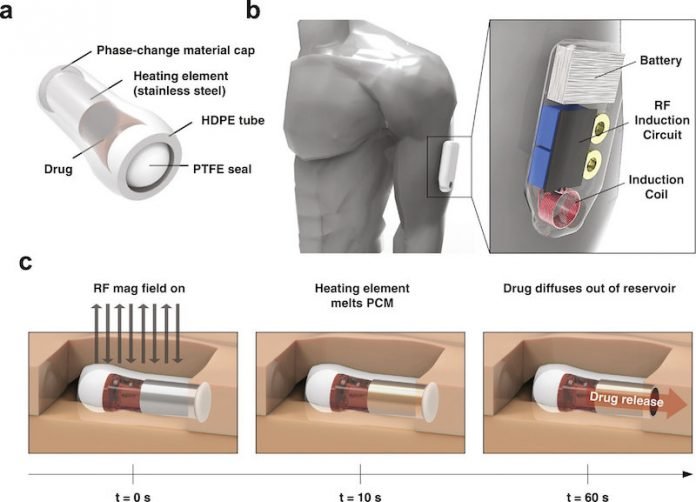
In a new study, researchers have developed a device that would automatically detect an overdose and deliver naloxone, a drug known to reverse deadly opioid effects.
This can save opioid users who tend to be alone and incapacitated during an overdose.
The research was conducted by a team from Purdue University.
The team says the new device wouldn’t require people to recognize that they’re having an overdose or to inject themselves with naloxone.
It can keep people stable long enough for emergency services to arrive.
An overdose happens when opioids bind to receptors in the brain that regulate breathing, causing a person to hypoventilate and die.
According to the U.S. Department of Health and Human Services, approximately 130 people in the U.S. die every day from opioid-related drug overdoses.
In the study, the team built a wearable device designed to detect when a person’s respiration rate decreases to a certain level and then release naloxone.
Naloxone can block the opioid from binding to brain receptors.
According to the team, wearing the device would be similar to wearing an insulin pump.
The current proof of concept is an armband that straps on a magnetic field generator, connected to a portable battery worn at the hip.
A sticker-like EKG sensor on the skin, such as on the chest, measures respiration rate.
When the sensor detects a respiration rate that’s too low, it activates the magnetic field generator to heat up a drug capsule in the body, releasing naloxone in 10 seconds.
The researchers envision the drug capsule being pre-injected under the skin in an outpatient setting.
That way, the device system would automatically deliver naloxone to the patient during an overdose, buying about an hour before relapsing.
That extra hour would give emergency services plenty of time to get the patient to the hospital.
The capsule also delivers a larger dose of naloxone than products currently available on the market—making it more effective at delaying relapse—and would be cheaper to manufacture.
The team has demonstrated through experiments that the setup successfully detects a low respiration rate from EKG signals and delivers naloxone.
The device has been patented through the Purdue Research Foundation Office of Technology Commercialization.
The researchers also plan to build a communications system into the device that would automatically alert emergency services when the patient has overdosed.
The lead author of the study is Hyowon “Hugh” Lee, an assistant professor of biomedical engineering at Purdue.
The study is published in the Journal of Controlled Release.
Copyright © 2019 Knowridge Science Report. All rights reserved.



